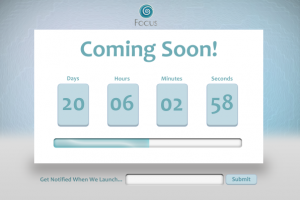 If you’re like me, and the kinds of work you do can vary enormously from project to project, you might find my Template Technique handy. As a writer, I find templates — basic pro formas that allow me to define the needs of each project — invaluable in my day to day work.
If you’re like me, and the kinds of work you do can vary enormously from project to project, you might find my Template Technique handy. As a writer, I find templates — basic pro formas that allow me to define the needs of each project — invaluable in my day to day work.
They help me:
- ask the right questions of my client
- keep projects on track
- meet project requirements
- ensure the quality of my output and service
- switch quickly between jobs and job types
Sure, you can sit down and whip up some project templates off the top of your head. After all, you undoubtedly know what information you need in the average project brief; you may well have an established process for scoping, quoting, and signing up a new job. And these templates may be easy enough to create in isolation when you have one of those rare quiet moments.
But there is another way to create work templates, and I think it’s more worthwhile. A while ago, every time I took on a new type of project, I documented what I did. Along the way, I made notes about things I would have liked to have done differently.
This gave me a series of blueprints that basically characterized a number of different types of projects, and what had been involved in each. But of particular value were the notes I’d made on improving the processes and work approach as I went through each job.
These notes allowed me to hone my processes with live client information, which made them more relevant and appropriate to my work. They also allowed me to document the way I, personally, wanted to handle things, and to capture my own solutions to potential problems. So rather than sitting in a vacuum imagining how the average person might respond to a project brief, I created templates that reflected my unique approach to solving various client problems.
So, for example, my writing project brief template includes detailed questions about:
- audience segmentation
- each segment’s prior experience with the client’s brand
- where the piece I’m producing fits within the client’s overall communications strategy
- proofreading and signoff procedures
- other items relevant to the job type and media being used
These aren’t questions I’ve seen in many briefing templates, but they help inform my work, and ensure that I deliver high-quality results to my clients. Of course, each time I come across a new job that requires something different from the others I’ve worked on, I amend my templates for that job type accordingly. This keeps them relevant, and gradually improves the service I provide to all clients with that job type.
In that respect, my work templates reflect some of the things that differentiate me from others in my field. Of course, since you and I operate differently — on both creative and business levels — your templates will probably be considerably different from mine, and from anyone else’s. But expend the brain power to create your own unique templates, and you may just find that they’re among your most valuable assets. How did you create your work templates? And how well do they perform?
Georgina has more than fifteen years' experience writing and editing for web, print and voice. With a background in marketing and a passion for words, the time Georgina spent with companies like Sausage Software and sitepoint.com cemented her lasting interest in the media, persuasion, and communications culture.





